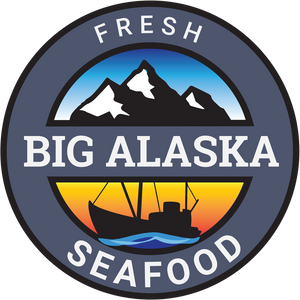Handling
Raw Finfish
Keep it cold and eat within 3 days. Do not rinse with water - the best way to prepare your fish before you portion it is to pat it dry with paper towel. Cooking it is up to you, but a common rule of thumb is to cook your fish at 400 degrees F for 12 minutes per inch in thickness. Marinades are great for seafood but should not be saved and used as a sauce unless the marinade has been cooked to a temperature of at least 165°F to eliminate microorganisms from the raw fish. Always marinate in the refrigerator in a glass or plastic container.
Cooked (smoked) Finfish
Keep it cold and eat within a week. These are the smoked finfish items like Smoked salmon, and they should not share environments with raw fish or shellfish because they are ready-to-eat.
Live Shellfish (mollusks)
The clams, mussels, and oysters that we sell in the shell are alive and should be placed in the fridge with the bag slightly open so the creatures can breath. Do not rinse live shellfish with fresh water unless you are cooking or eating them immediately thereafter, in which case, its not a bad idea. Keep all shellfish from contaminating other finfish in case someone has a shellfish allergy.
Raw Shellfish (crustaceans)
Keep it cold and eat within three days. Most of the shrimp that we sell falls into this category, because it is uncooked, and the same rules about mixing cooked and raw and finfish and shellfish apply - don't do it.
Cooked Shellfish and Crustaceans
If it's smoked, eat within a week; if its cooked, eat with three days. All the crab that we sell has been cooked already because it needs to be cooked while still alive in order to capture its best flavor.
Allergy and cooked/raw Cross-contamination prevention:
- Do not mix cooked fish, raw fish, or cooked or raw shellfish (mollusks and crustaceans). Mixing sea products from these four categories may cause illness or allergic reaction.
- No cooked fish, raw fish, or cooked or raw shellfish product should ever share food surfaces, share storage bins, or lie in the drip path of other stored items or one another. A physical separation of these four categories of products should to be achieved at all times.
- Shellfish allergy symptoms: Symptoms typically present from minutes to hours after eating shellfish. They may include: Hives, itching or eczema (atopic dermatitis) Swelling of the lips, face, tongue and throat, or other parts of the body. Wheezing, nasal congestion or trouble breathing.
-
Shellfish allergy treatment: There’s currently no cure for a shellfish allergy. The best treatment is to avoid foods such as clams, mussels, oysters, shrimp, lobster, crab, and other crustaceans. Finned fish are not related to shellfish allergy's, but cross-contamination is can occur. You may want to avoid seafood altogether if your shellfish allergy is severe.
Many doctors also recommend that people with shellfish allergies carry epinephrine (EpiPen, Auvi-Q, or Adrenaclick) for self-administration in case you accidentally ingest any. Epinephrine (adrenalin) is the first-line treatment for anaphylaxis. For mild reactions such as a rash or itchiness, taking an antihistamine such as Benadryl may be recommended by your doctor.
*There may be a risk associated with consuming uncooked or raw finfish and shellfish. Consuming raw or undercooked fish and seafood may increase your risk of foodborne illness, especially if you have certain medical conditions.
*The contents herein are not intended to offer personal medical advice. You should seek the advice of your physician or other qualified health provider with any questions you may have regarding a medical condition. Never disregard professional medical advice or delay in seeking it because of something you have read on this website.
